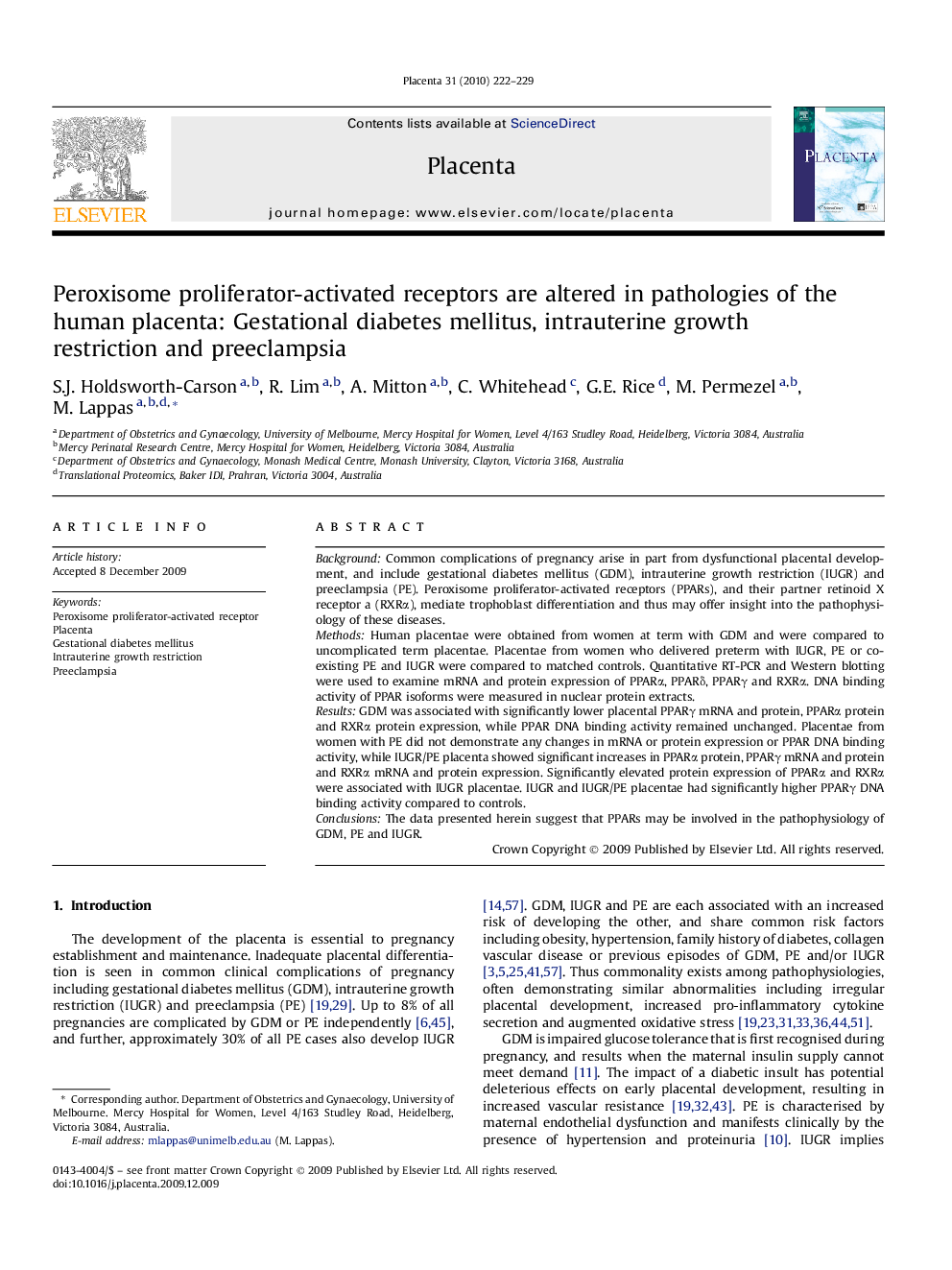| Article ID | Journal | Published Year | Pages | File Type |
|---|---|---|---|---|
| 2789594 | Placenta | 2010 | 8 Pages |
BackgroundCommon complications of pregnancy arise in part from dysfunctional placental development, and include gestational diabetes mellitus (GDM), intrauterine growth restriction (IUGR) and preeclampsia (PE). Peroxisome proliferator-activated receptors (PPARs), and their partner retinoid X receptor a (RXRα), mediate trophoblast differentiation and thus may offer insight into the pathophysiology of these diseases.MethodsHuman placentae were obtained from women at term with GDM and were compared to uncomplicated term placentae. Placentae from women who delivered preterm with IUGR, PE or co-existing PE and IUGR were compared to matched controls. Quantitative RT-PCR and Western blotting were used to examine mRNA and protein expression of PPARα, PPARδ, PPARγ and RXRα. DNA binding activity of PPAR isoforms were measured in nuclear protein extracts.ResultsGDM was associated with significantly lower placental PPARγ mRNA and protein, PPARα protein and RXRα protein expression, while PPAR DNA binding activity remained unchanged. Placentae from women with PE did not demonstrate any changes in mRNA or protein expression or PPAR DNA binding activity, while IUGR/PE placenta showed significant increases in PPARα protein, PPARγ mRNA and protein and RXRα mRNA and protein expression. Significantly elevated protein expression of PPARα and RXRα were associated with IUGR placentae. IUGR and IUGR/PE placentae had significantly higher PPARγ DNA binding activity compared to controls.ConclusionsThe data presented herein suggest that PPARs may be involved in the pathophysiology of GDM, PE and IUGR.
